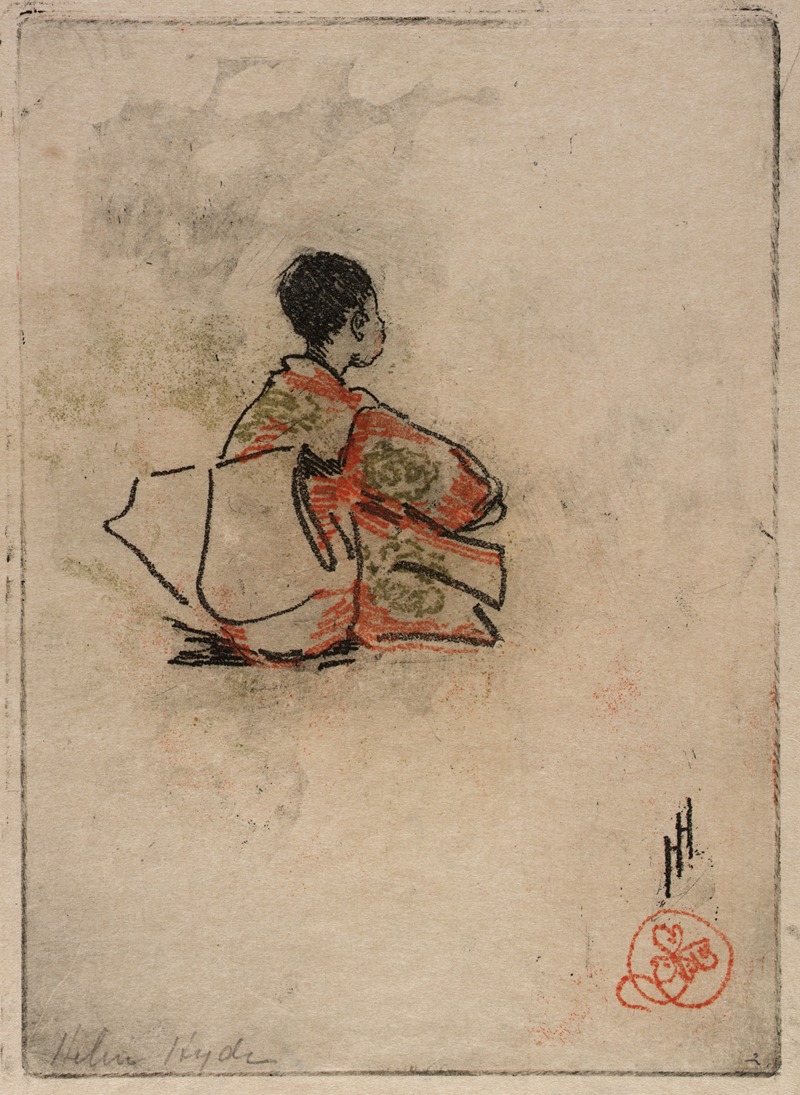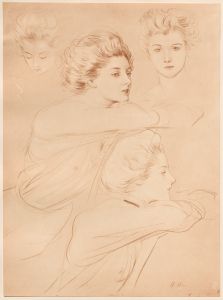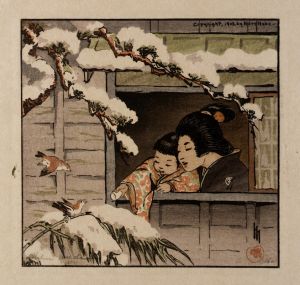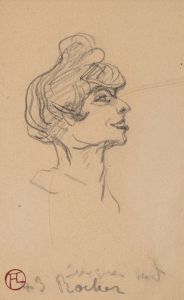
Little Dancer of the ‘No’
A hand-painted replica of Helen Hyde’s masterpiece Little Dancer of the ‘No’, meticulously crafted by professional artists to capture the true essence of the original. Each piece is created with museum-quality canvas and rare mineral pigments, carefully painted by experienced artists with delicate brushstrokes and rich, layered colors to perfectly recreate the texture of the original artwork. Unlike machine-printed reproductions, this hand-painted version brings the painting to life, infused with the artist’s emotions and skill in every stroke. Whether for personal collection or home decoration, it instantly elevates the artistic atmosphere of any space.
Helen Hyde (1868–1919) was an American artist known for her work in printmaking and painting, particularly her contributions to the Japonisme movement, which was characterized by Western artists' fascination with Japanese art and culture. One of her notable works is "Little Dancer of the 'No'," which reflects her interest in Japanese themes and aesthetics.
Hyde was born in Lima, New York, and later moved to San Francisco, where she began her formal art education. She studied at the California School of Design and later continued her studies in Berlin and Paris. Her exposure to Japanese art during her time in Europe significantly influenced her artistic direction. In 1899, Hyde traveled to Japan, where she lived for several years, immersing herself in the culture and studying traditional Japanese woodblock printing techniques.
"Little Dancer of the 'No'" is a work that exemplifies Hyde's integration of Japanese artistic methods with Western sensibilities. The piece likely depicts a young performer from the Noh theater, a classical Japanese performance art that combines elements of dance, drama, music, and poetry. Noh theater is known for its highly stylized performances and the use of masks, which convey the characters' emotions and roles.
Hyde's work often focused on capturing the everyday life and cultural practices of Japan, and "Little Dancer of the 'No'" is no exception. Her attention to detail and ability to convey the grace and poise of the dancer are evident in the piece. Hyde's prints are characterized by their delicate lines, subtle color palettes, and the incorporation of Japanese compositional techniques, such as the use of negative space and asymmetry.
Throughout her career, Helen Hyde produced numerous prints and paintings that depicted scenes of Japanese life, particularly focusing on women and children. Her work was well-received both in Japan and the United States, and she played a significant role in popularizing Japanese art styles in the West during the early 20th century.
Hyde's contributions to the art world were recognized during her lifetime, and she exhibited her work in various international exhibitions. Her prints were collected by art enthusiasts and institutions, helping to cement her legacy as a prominent figure in the Japonisme movement.
"Little Dancer of the 'No'" remains an important example of Hyde's artistic achievements and her ability to bridge cultural divides through her art. Her work continues to be studied and appreciated for its unique blend of Eastern and Western artistic traditions, and she is remembered as a pioneer who helped introduce Japanese aesthetics to a broader audience.


















